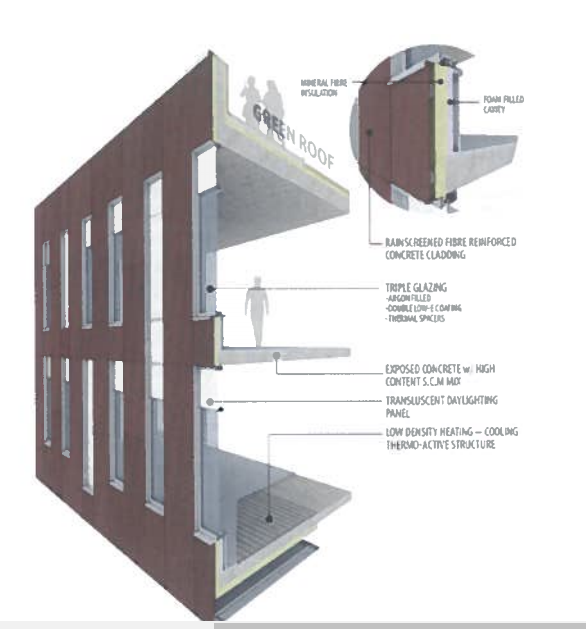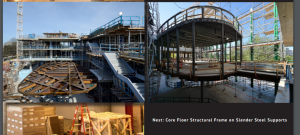Ever wanted to peel back a building and understand what goes on behind the walls?
Ever wondered what went into something like the NEST?
This weekend I had the opportunity to speak with the man who put the curves, the swerves and the showcase structures in the NEST. His name is Micheal Kingsmill and here are some of things he wanted to point out to any student looking a the sustainable design in the NEST.
Did you know that the NEST:
- Is LEED Platinum Certification (the highest Green Building rating in North America).
- Has passive climate control systems that cover the 250,000 square foot
- Able to collect its own rainwater and has a top of the line grey water managment solution
- Has internal composting systems
- Low Carbon and sustainable material like FSC sourced wood, Portland limestone cement (which reduced CO2 emissions) and 85% – 90% recycled steel
- Able to have remarkably thin insulated walls via a innovative thermal layering!
He outlined the relationship between initial sustainable vision developed by the AMS and the end product that is the NEST. Furthermore he highlighted the extreme importance of organizational and institutional buy in as he gave a few examples of other projects he worked on that were on the launchpad so to speak but didn’t get the final go ahead for liftoff.
This is especially relevant to other sustainability projects run by organizations such as the redesign of recycling stations to decrease unfiltered waste or supply chain optimization, all of these projects must take into account the stakeholder networks and decision making chains that affect the successful implementation of their projects.
However another key point he addressed was that institutional pushback can lead to creative design changes. For example the iconic floating hall was a by product of land use restrictions which forced the building to grow vertically.
As always,
Thanks for Reading and For All Your Time!
Warmest Regards,
Yajur Sondhi





It’s actually very interesting how you chose to look at our new SUB for a blog post. I honestly really did not know just how much sustainability played a part in the design of the NEST. I am sure any student is aware of the sustainability initiatives that UBC has begun to put in place, with Dyson Airblade dryers and foam soap dispensers in the washrooms among other things, but I think it would do good on us to know that the NEST is basically the pinnacle of sustainable design. Not only is the building itself beautiful, but there are so many green elements that you touched on that I never even noticed. The green roof and the thin walls never struck out to me as a sustainability initiative. So many of our peers use this building and don’t know the work that is put into it. We learn a lot about skepticism in this class but I really don’t see how publicizing the features of the NEST more could be an issue and I’m not sure why I haven’t seen more about this. Perhaps I am just uninformed, but this building really is well-designed.
Thanks Yajur! I actually had no idea that the NEST was such a “green” and sustainability-centred building! I think the NEST is the archetypical example of architecture design today and in the near future. I think the first thought that people have when they see the NEST is how beautiful it is, not how sustainable it is. I think that point is key – even before I read your post, I love how the NEST looks and I think it’s a great building! Ultimately, I think this relates with any products, not just buildings; rather than focus solely on sustainability, balance it with high quality and performance!